New Road was officially named in 1871. For the next 120 years, these New Road premises have housed coach builders, motor engineers and a garage. Until the early 1800s, the River Westlode ran along the course of New Road and Westlode Street. The site of these premises was on the north bank or Westlode Side. Its approximate location is marked ‘Ivy Wall’ on the town map of 1732. The map is an important historical reference in Spalding’s history.
Photographs of archaeological digs, which were undertaken prior to the building of this pub.
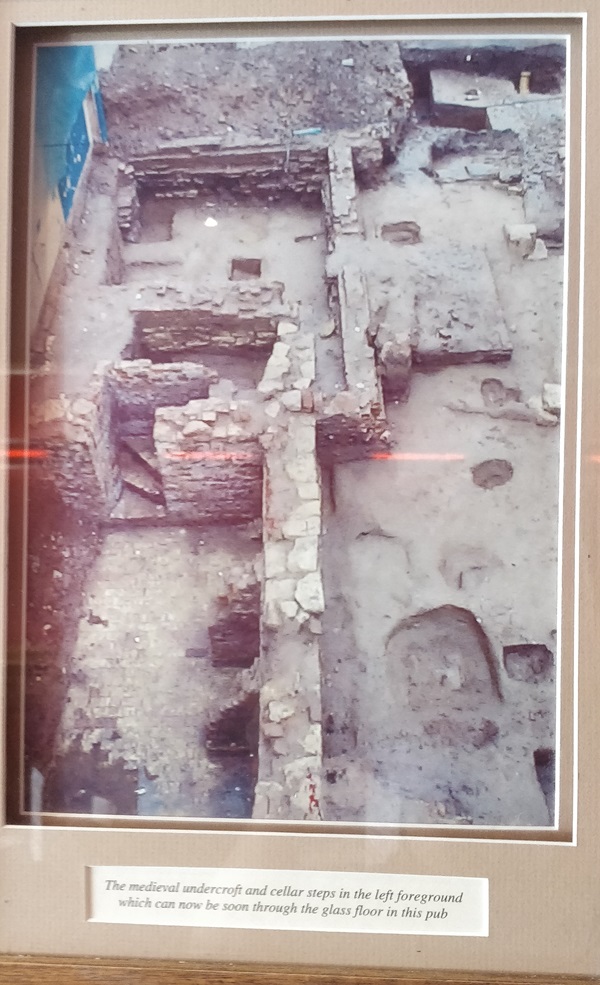
The medieval undercroft and cellar steps in the left foreground can now be seen through the glass floor in this pub.
In the left foreground is the medieval undercroft. The steps were added c1600 and can now be seen through the glass floor.
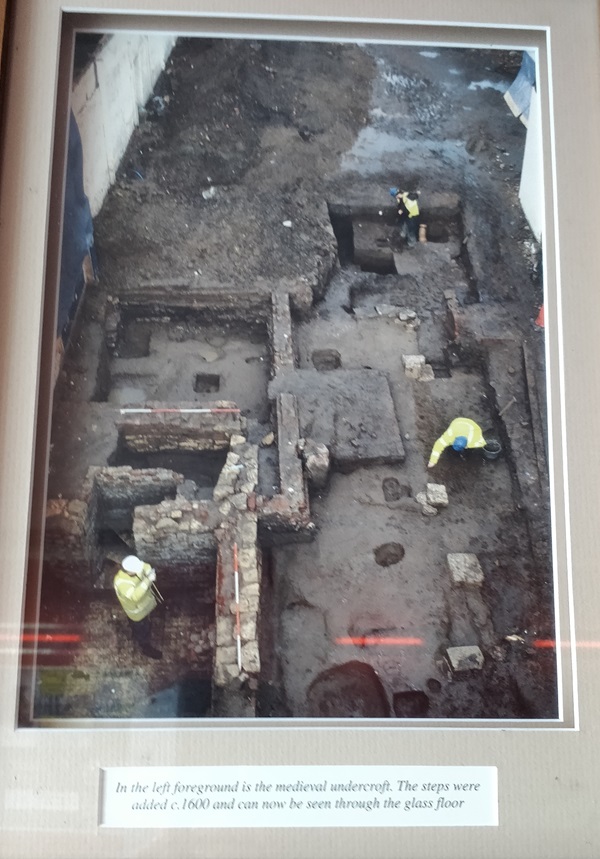
A glass panel on the floor, allowing viewers to see original, old medieval undercroft and cellar steps.
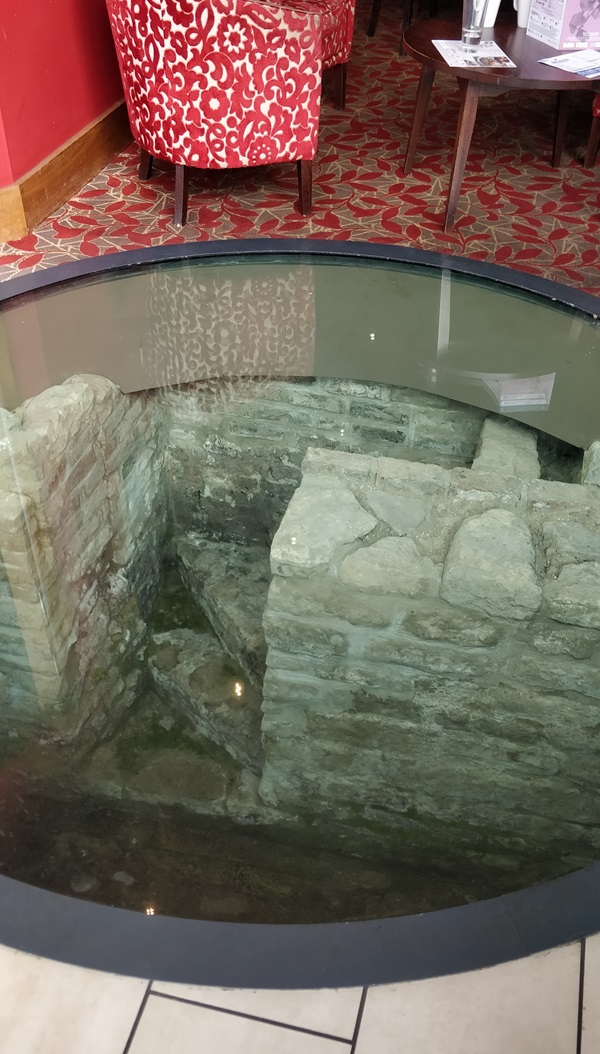
A selection of historical ceramics are displayed on the walls.
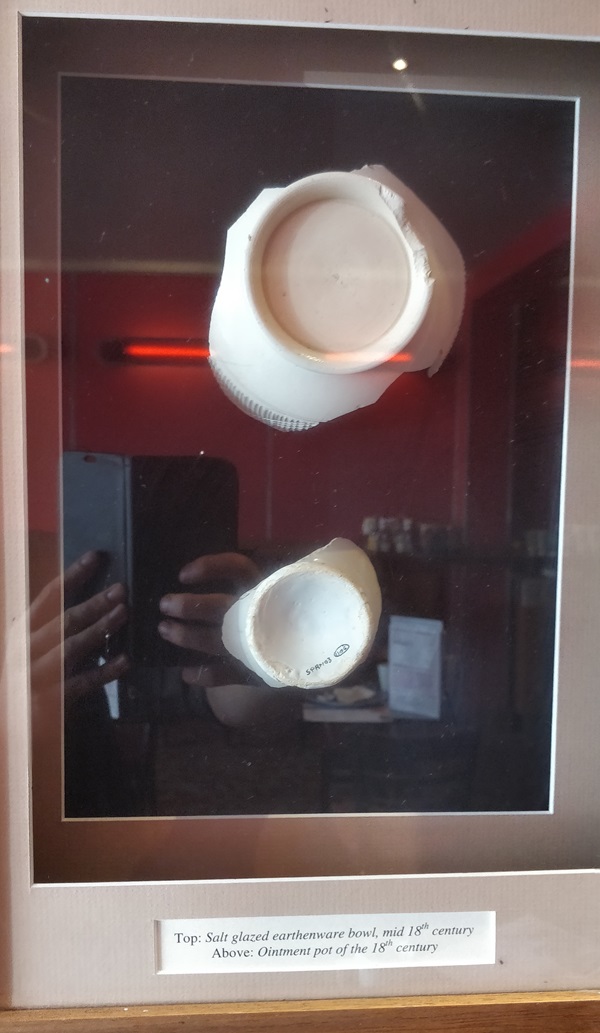
Top: Salt glazed earthenware bowl, mid 18th century
Above: Ointment pot of the 18th century.
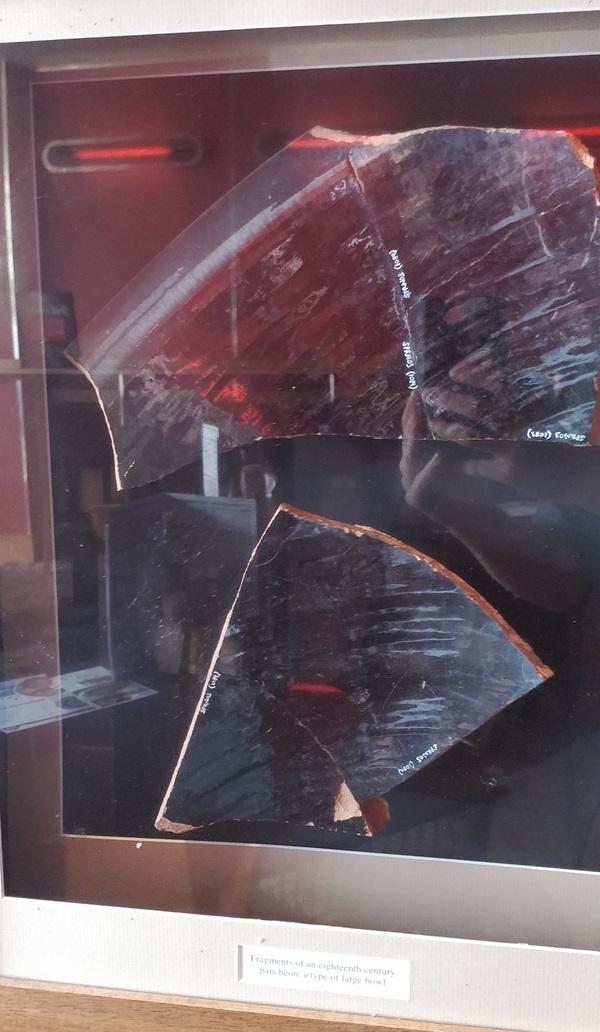
Fragments of an 18th century pancheon, a type of large bowl.

Glass bottle bases, of the 18th to early 19th century.
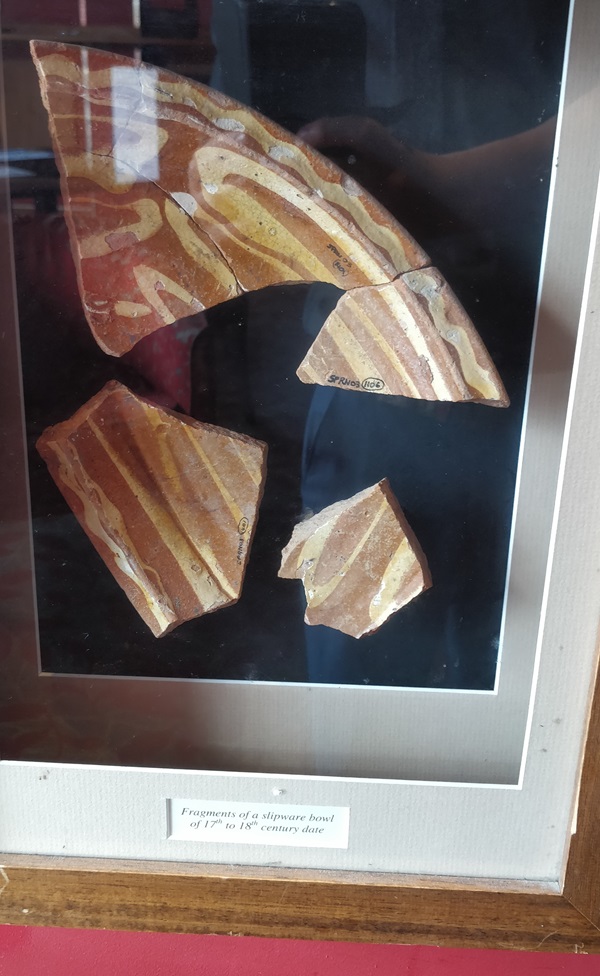
Fragments of a slipware bowl of 17th to 18th century date.
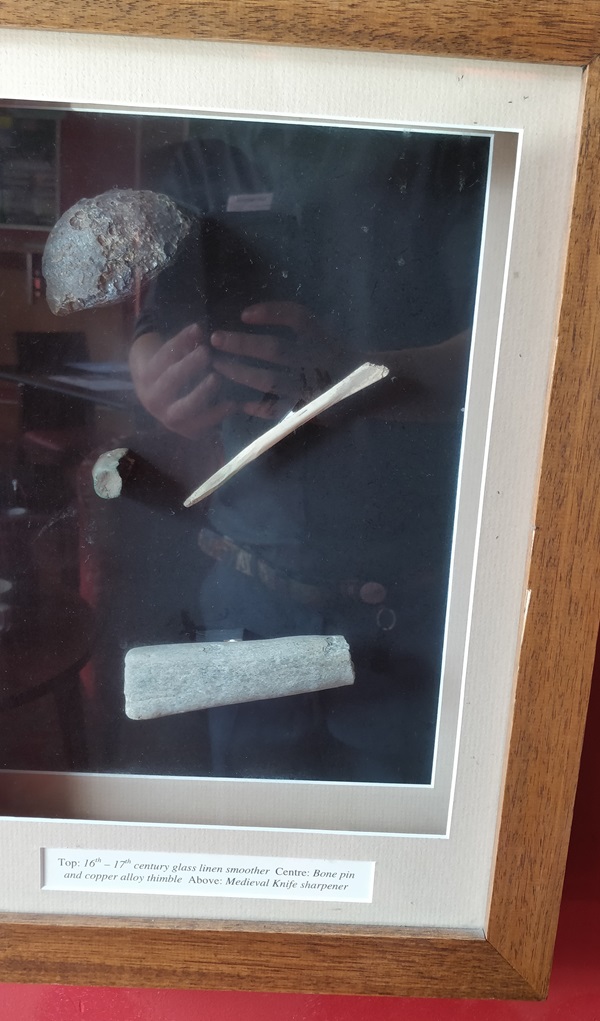
Top: 16th – 17th century glass linen smoother
Centre: Bone pin and copper alloy thimble
Above: Medieval knife sharpener.

Fragments of 17th – 18th century slipware bowls.
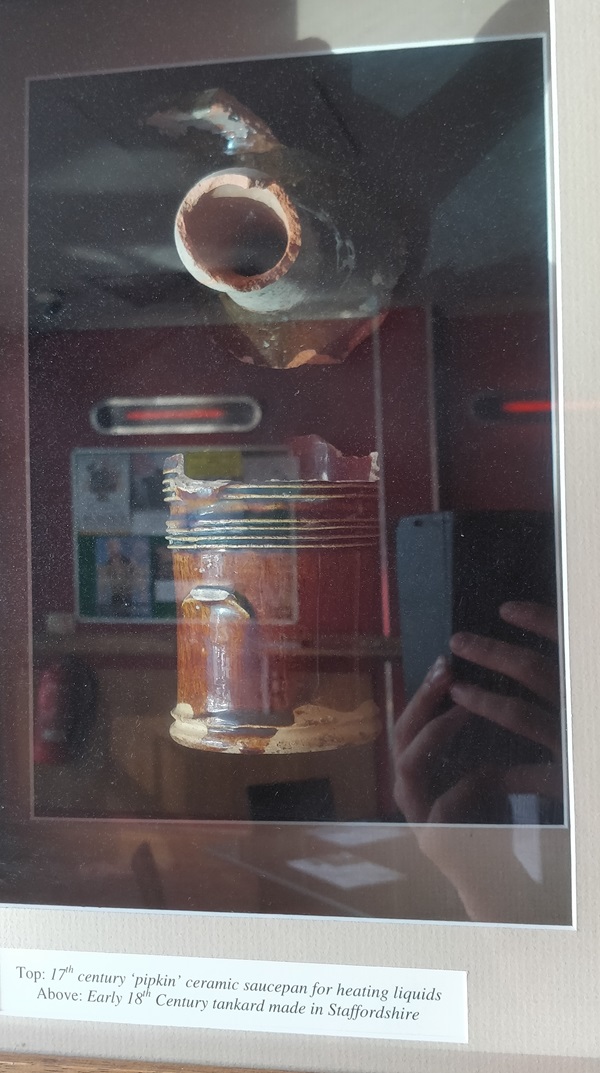
Top: 17th century ‘pipkin’ ceramic saucepan for heating liquids
Above: Early 18th century tankard made in Staffordshire.
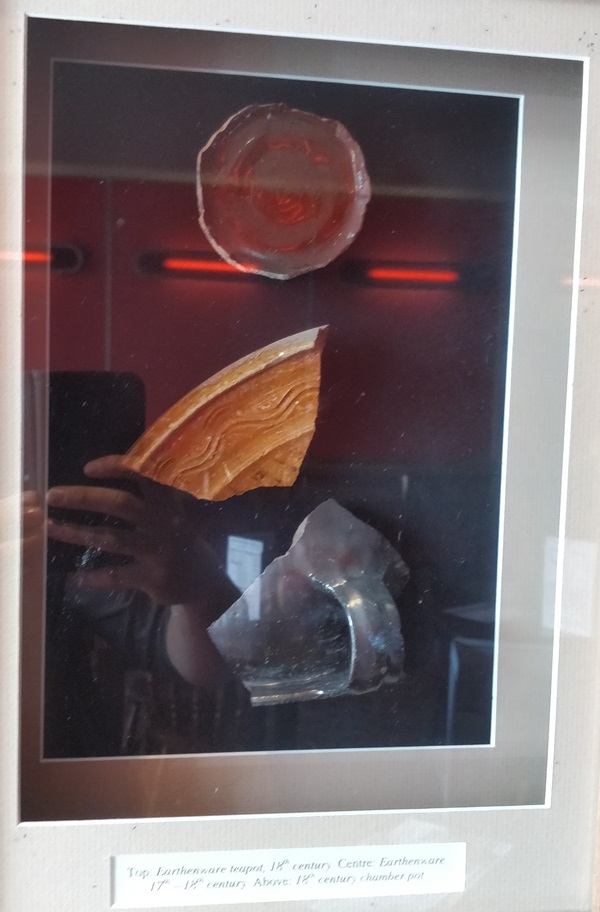
Top: Earthenware teapot, 18th century
Centre: Earthenware 17th-18th century
Above: Chamberpot, 18th century.
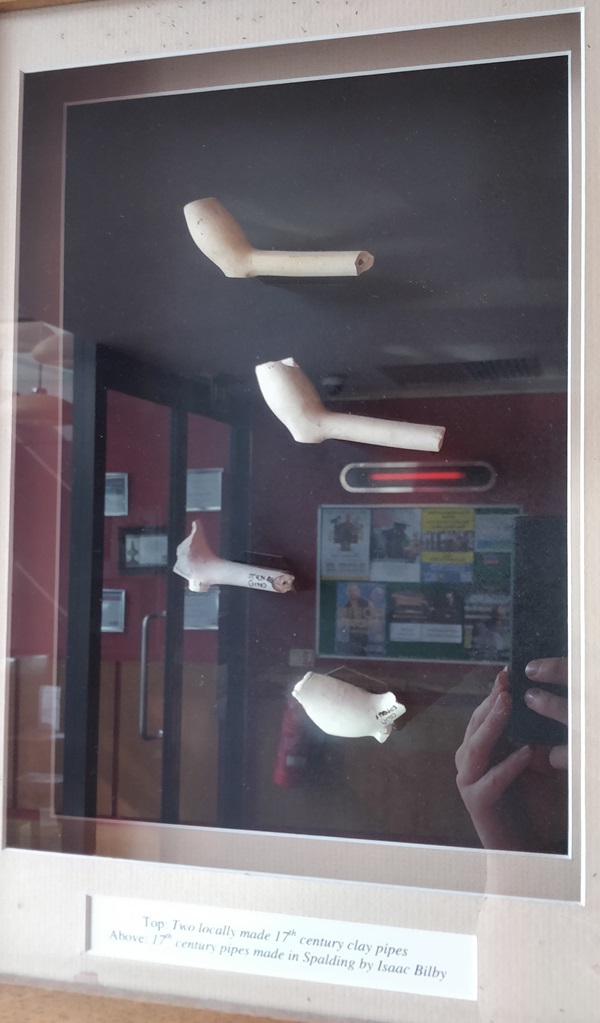
Top: Two locally made 17th century clay pipes
Above: 17th century pipes made in Spalding by Isaac Bibly.
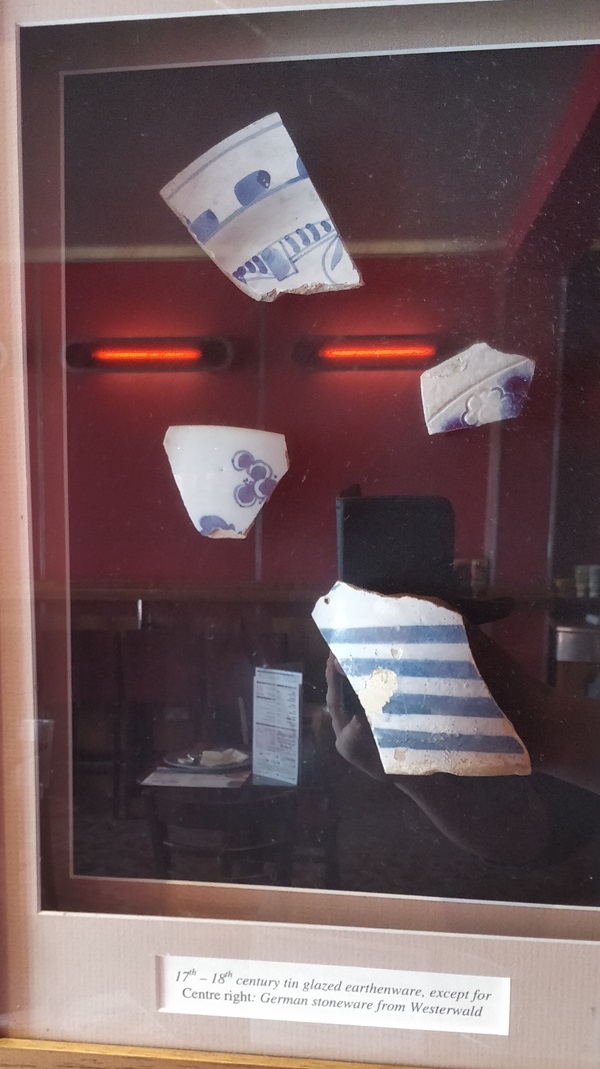
17th – 18th century tin glazed earthenware, except for centre right: German stoneware from Westerwald.
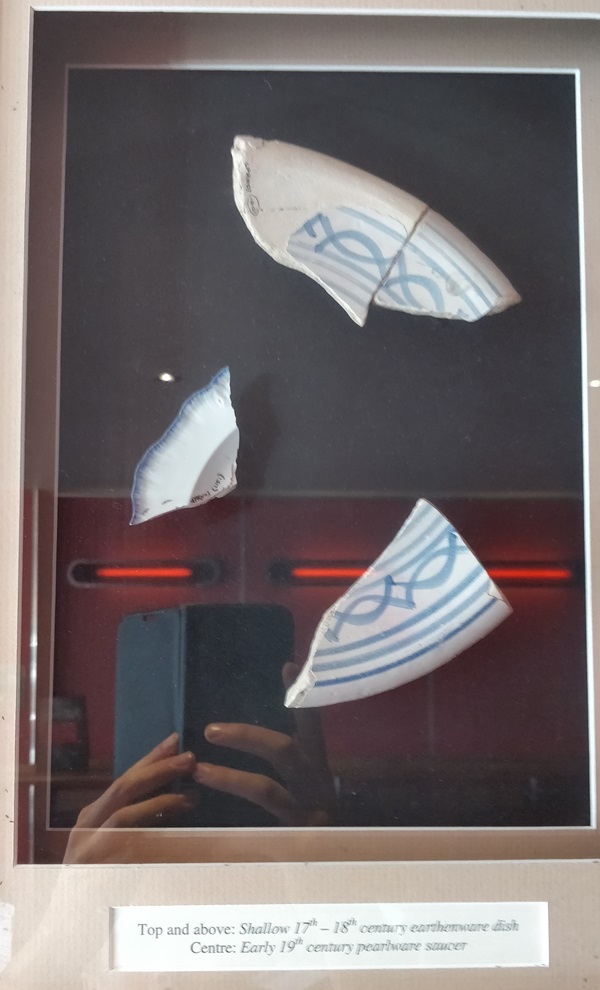
Top and above: Shallow 17th-18th century earthenware dish
Centre: Early 19th century pearlware saucer.
External photograph of the building – main entrance.

If you have information on the history of this pub, then we’d like you to share it with us. Please e-mail all information to: pubhistories@jdwetherspoon.co.uk